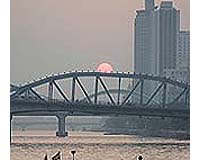| . |  |
. |
Sanaa, Yemen (UPI) Oct 29, 2009 Sanaa may be the first capital city in the world to run out of water. If that happens, it will be a signpost to the conflicts over shrinking resources that scientists and sociologists see coming in the decades ahead. The ancient city, which dates back to the Sabean dynasty of the 6th century B.C., is expected to run out of drinking water as early as 2025 at current consumption levels, according to the Sanaa Water Basin Management Project funded by the World Bank. The people of Yemen, which lies on the southwestern tip of the Arabian peninsula, have lived on scarce water resources for centuries. But the current water crisis has been heightened by a rapidly expanding population, accelerating urbanization and the ravages of climate change. Sanaa's population, currently pegged at 2 million, had quadrupled since the 1980s and is growing by about 8 percent a year, overwhelming the available water supply. The national growth rate last year was 3.46 percent, one of the highest in the world. A decade ago Sanaa got water from 180 wells. These days that's down to 80 as the aquifers dry up. In 2008 a World Bank report found that groundwater levels across Yemen were dropping by 20-65 feet a year. The Carnegie Endowment for International Peace noted that 19 of Yemen's 21 main aquifers were not being replenished because of lower rainfall. Many of the people moving into Sanaa are the first wave of what are becoming known as "climate refugees." These are expected to number in the millions in the next few decades as global warming melts polar icecaps, floods coastal regions, accelerates the spread of deserts and destroys farmland. Much of Yemen's water problem is self-inflicted. An estimated 40 percent of available water is consumed by the cultivation of qat, a leafy stimulant that is chewed by 70 percent of Yemeni males daily. Farmers prefer to grow it for the high profit involved in the narcotics trade. The government in Sanaa has been unable to do much to ameliorate the crisis. Its authority does not run much beyond Yemen and other major urban centers, and its oil reserves, never particularly big, are running out like the water resources. It is also grappling with a tribal insurgency in the lawless north, an increasingly volatile secessionist movement in the south and the resurgence of al-Qaida forces in the east. The water shortage is starting to cause civil unrest. Water available across the country, much of it rocky highlands, amounts to 100-200 cubic meters per person per year, well below the international water poverty line of 1,000 cubic meters. "We have a water shortage that reflects itself in fighting between the people," says Deputy Planning Minister Hisham Sharaf. "If we continue spending this much water on qat, Sanaa has 10 to 15 years." Yemen's problems are probably more acute than those of other regional states, but not by much, and the danger lies in the seeds of conflict that it contains. Conditions have been exacerbated by a four-year drought that has affected all of the Middle East, from Iran to Morocco. The urban population drift this has caused is dramatically changing the demographics of the region and putting greater strain on water resources. The subsequent poverty and social discontent this engenders increases the risk of destabilization and armed conflict within and between states. "Water is definitely a security problem in the region," according to Samir Taqi, director of the Orient Center for Strategic Studies, a think tank in Damascus, capital of Syria. "It's always been this way in the region, but now what's making it of much greater amplitude is that from one side the drought is much heavier, and second, the region itself is much more vulnerable geopolitically speaking."
Share This Article With Planet Earth
Related Links Water News - Science, Technology and Politics
 China poisoning Pearl River Delta: Greenpeace report
China poisoning Pearl River Delta: Greenpeace reportHong Kong (AFP) Oct 28, 2009 Factories in southern China are poisoning the Pearl River Delta, an area where almost one-third of the country's exports are made, Greenpeace said in a report Wednesday. The environmental group said it analysed 25 samples of wastewater discharge from several industrial sites and found a "diverse range of hazardous chemicals," including heavy metals associated with causing brain damage. ... read more |
|
| The content herein, unless otherwise known to be public domain, are Copyright 1995-2009 - SpaceDaily. AFP and UPI Wire Stories are copyright Agence France-Presse and United Press International. ESA Portal Reports are copyright European Space Agency. All NASA sourced material is public domain. Additional copyrights may apply in whole or part to other bona fide parties. Advertising does not imply endorsement,agreement or approval of any opinions, statements or information provided by SpaceDaily on any Web page published or hosted by SpaceDaily. Privacy Statement |